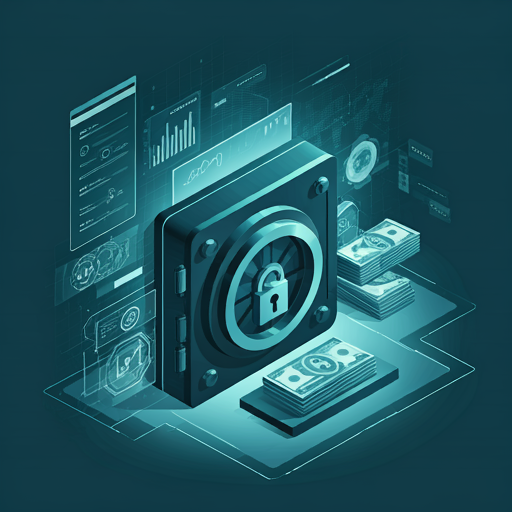Introduction to Cybersecurity in Finance
The Importance of Cybersecurity
Cybersecurity is crucial in finance, as it protects sensitive information from unauthorized access. He understands that breaches can lead to significant financial loss. Security measures must be robust and continuously updated. This is essential for maintaining trust. Financial institutions face evolving threats daily. It’s a constant battle against cybercriminals.
Overview of Financial Threats
Financial threats encompass a range of risks, including fraud, hacking, and insider trading. These vulnerabilities can undermine market integrity and investor confidence. Moreover, the rise of digital currencies has introduced new avenues for exploitation. Cybercriminals are increasingly sophisticated. They often employ advanced techniques to bypass security measures. This is alarming for financial institutions. Understanding these threats is essential for effective risk management. Awareness is the first step to protection.
Understanding Cryptocurrency Vulnerabilities
Common Security Flaws in Crypto Platforms
Crypto platforms often exhibit security flaws, such as inadequate encryption and poor access controls. These weaknesses can lead to unauthorized transactions and data breaches. Additionally, many platforms lack comprehebsive auditing processes. This oversight can result in undetected vulnerabilities. He recognizes that user education is often insufficient. Users must understand security measures best practices. Awareness is crucial for safeguarding assets.
Case Studies of Major Breaches
Several high-profile breaches have exposed vulnerabilities in cryptocurrency exchanges. For instance, the Mt. Gox incident resulted in the loss of 850,000 bitcoins due to inadequate security measures. This breach highlighted the importance of robust wallet protection. He notes that many exchanges fail to implement multi-signature technology. Such oversights can lead to significant financial losses. Security must be a priority.
Best Practices for Securing Digital Assets
Implementing Strong Passwords and 2FA
Implementing strong passwords and two-factor authentication (2FA) is essential for wecuring digital assets. He recommends using complex passwords that combine letters, numbers, and symbols. This approach significantly reduces the risk of unauthorized access. Additionally, enabling 2FA adds an extra layer of security. It requires a second verification step. This is a crucial safeguard.
Regular Software Updates and Patching
Regular software updates and patching are vital for maintaining security in digital asset management. He emphasizes that outdated software can harbor vulnerabilities. These weaknesses are often exploited by cybercriminals. Timely updates mitigate these risks effectively. Additionally, organizations should establish a routine for monitoring software performance. This practice ensures optimal security. Consistency is key to protection.
Role of Blockchain Technology in Security
How Blockchain Enhances Security
Blockchain technology enhances security through decentralization and immutability. He notes that transactions are recorded across multiple nodes. This distribution makes unauthorized alterations nearly impossible. Additionally, cryptographic techniques secure data integrity. Each block is linked to the previous one. This creates a transparent and verifiable ledger. Trust is built through transparency.
Limitations of Blockchain Security
Despite its advantages, blockchain security has limitations. He acknowledges that scalability issues can hinder performance. As transaction volume increases, speed may decrease. Additionally, smart contracts can introduce vulnerabilities. These flaws may be exploited by malicious actors. Furthermore, user error remains a significant risk. Awareness is essential for prevention.
Regulatory Frameworks and Compliance
Understanding Global Regulations
Global regulations for cryptocurrency are evolving rapidly. He observes that different jurisdictions have varying compliance requirements. This inconsistency can create challenges for businesses. For instance, some countries mandate strict KYC protocols. Others may have more lenient approaches. Understanding these regulations is crucial for operational success. Compliance helps mitigate legal risks. Awareness is key for informed decision-making.
Impact of Compliance on Security Practices
Compliance significantly influences security practices within organizations. He notes that adhering to regulations often necessitates enhanced security measures. For example, implementing robust data protection protocols becomes essential. This proactive approach helps prevent data breaches. Additionally, regular audits are often required to ensure compliance. These audits can identify vulnerabilities. Awareness of regulations fosters a culture of security.
Emerging Threats in the Cryptocurrency Space
Phishing Attacks and Social Engineering
Phishing attacks and social engineering are significant threats in the cryptocurrency space. He recognizes that these tactics tap human psychology. Attackers often impersonate trusted entities to gain sensitive information. This manipulation can lead to substantial financial losses. Awareness and education are crucial for prevention. Users must remain vigilant against suspicious communications. Trust your instincts and verify sources.
Malware and Ransomware Risks
Malware and ransomware pose significant risks in the cryptocurrency sector. He notes that these malicious programs can encrypt data, demanding payment for access. Such attacks can cripple operations and lead to financial loss. Regular backups and security software are essential defenses. Users must stay informed about emerging threats. Awareness is key to prevention.
Tools and Technologies for Enhanced Security
Security Software and Solutions
Security software and solutions are essential for protecting digital assets. He emphasizes that effective tools can detect and mitigate threats. Firewalls and antivirus programs are fundamental components. They provide a first line of defense. Additionally, encryption software secures sensitive data. This is crucial for maintaining confidentiality. Regular updates enhance software effectiveness.
Hardware Wallets vs. Software Wallets
Hardware wallets offer enhanced security for cryptocurrency storage. He notes that they store private keys offline, reducing exposure to online threats. In contrast, software wallets are more convenient for transactions. However, they are more vulnerable to hacking. Users must weigh security against accessibility. Each option has its advantages. Choose based on individual needs.
Future Trends in Cybersecurity for Finance
AI and Machine Learning in Threat Detection
AI and machine learning are transforming threat detection in finance. He observes that these technologies analyze vast data sets quickly. This capability enhances the identification of anomalies. Additionally, they can adapt to evolving threats. Predictive analytics further improve response times. Staying ahead of cybercriminals is essential. Innovation is crucial for effective security.
Predictions for the Next Decade
In the next decade, cybersecufity will evolve significantly. He predicts increased integration of AI in threat detection. This advancement will enhance response capabilities and efficiency. Additionally, regulatory frameworks will likely become more stringent. Compliance will be essential for financial institutions. Cyber resilience will be a key focus area. Organizations must prioritize proactive security measures.

Leave a Reply